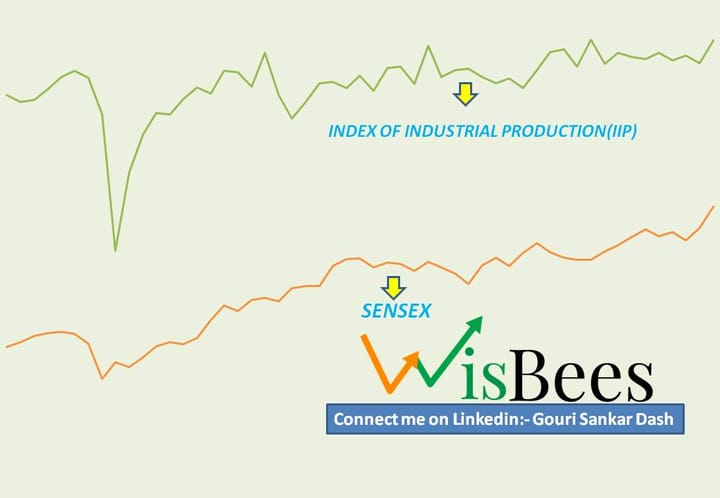Modern Portfolio Theory

Modern Portfolio Theory (MPT) or also known as Markowitz Portfolio Optimization Model is a framework for portfolio management that aims to maximize the return on a portfolio while minimizing its risk. This is a framework for portfolio management developed by economist Harry Markowitz in the 1950s.
Let’s Understand this in Layman's Language
The theory suggests creating a portfolio of negatively correlated assets such as Stocks with bonds or Golds. If Stocks underperform in the Market, the Bonds and Gold may give you a good return.
For example, let's say you have Rs.1,00,000 to invest. You could put all your money into one stock or bond, but that would be risky because if the stock or bond performs poorly, you could lose a lot of money. MPT suggests that instead, you should invest your money in a variety of stocks, bonds, and other investments. By diversifying your portfolio, you spread out your risk, so if one investment performs poorly, you won't lose everything.
Let’s dive a little Deeper
MPT suggests that the risk of a portfolio should be measured in terms of its variance or standard deviation, rather than just the risk of individual assets. MPT also assumes that investors should be concerned with the risk of the portfolio as a whole, rather than just the risk of individual assets.
To illustrate the concept of MPT, let's consider an example of two assets: a stock and a bond. The stock has an expected return of 10% and a standard deviation of 20%, while the bond has an expected return of 5% and a standard deviation of 10%. If an investor invests all of their money in the stock, their expected return is 10% with a standard deviation of 20%. If they invest all of their money in the bond, their expected return is 5% with a standard deviation of 10%.
However, if the investor combines the two assets in a portfolio with a 50/50 allocation, the expected return of the portfolio is
=(0.5 x 10%) + (0.5 x 5%) = 7.5%
Assuming a correlation of 0 (i.e., the returns of the two assets are uncorrelated), the standard deviation of the portfolio is:
= sqrt((0.5^2 x 20%^2) + (0.5^2 x 10%^2))
= 0.1118 or approximately 11.18%
So, by combining the two assets in a portfolio, the investor has achieved a lower standard deviation than investing all of their money in the stock, while still earning a higher expected return than investing all of their money in the bond.
The Markowitz Model uses several inputs to determine the optimal portfolio allocation, including:
- Expected returns of individual assets
- Standard deviation of individual assets (a measure of risk)
- Correlation between asset returns (a measure of how the assets move in relation to each other)
- Investor's risk tolerance (how much risk they are willing to take on)
The model calculates the efficient frontier by plotting the expected returns and standard deviations of all possible portfolios that can be created by combining the assets in the portfolio. The optimal portfolio is the one that lies on the efficient frontier and provides the highest expected return for a given level of risk.
Application of MPT
Overall, MPT is a powerful tool for investors and financial professionals, and its applications are numerous.
- Asset allocation: MPT is often used to determine the optimal allocation of assets in a portfolio. By analyzing the risk and return characteristics of different assets, MPT helps investors create a portfolio that maximizes returns while minimizing risk.
- Risk management: MPT is useful in managing risk by diversifying the portfolio across different assets. By spreading investments across different asset classes, investors can reduce the overall risk of the portfolio while maintaining a certain level of expected return.
- Portfolio optimization: MPT helps investors create an optimized portfolio by identifying the efficient frontier, which is the set of portfolios that provides the highest expected return for a given level of risk. By selecting a portfolio that lies on the efficient frontier, investors can achieve the highest possible return for a given level of risk.
Key Takeaways
- MPT is a framework for portfolio management that aims to maximize the return on a portfolio while minimizing its risk by creating a diversified portfolio of negatively correlated assets.
- The risk of a portfolio should be measured in terms of its variance or standard deviation, rather than just the risk of individual assets.
- MPT assumes that investors should be concerned with the risk of the portfolio as a whole, rather than just the risk of individual assets.
- By combining assets with different expected returns and standard deviations in a portfolio, an investor can achieve a lower standard deviation than investing all of their money in one asset while still earning a higher expected return than investing all of their money in the other asset.
- MPT can be used for asset allocation, risk management, and portfolio optimization.
- The efficient frontier is the set of portfolios that provides the highest expected return for a given level of risk and can be used to identify an optimized portfolio.



